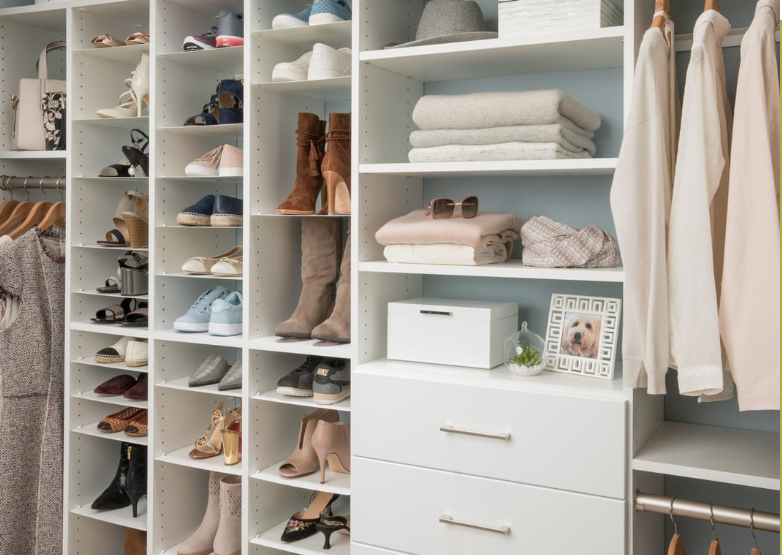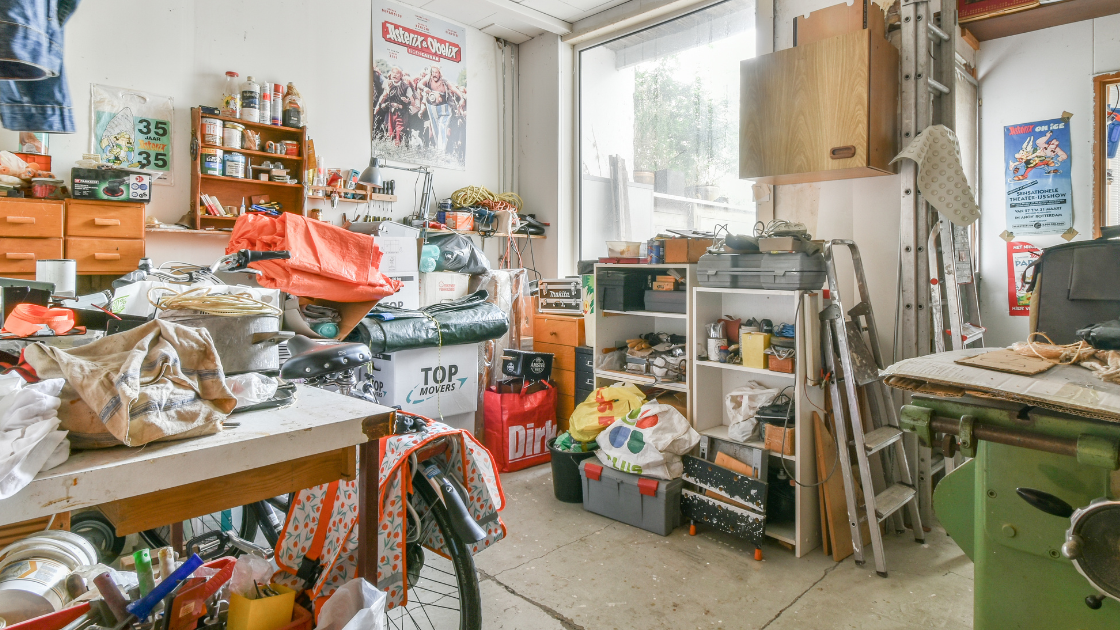Harmonizing Your Home When Spouses Disagree on Clutter
When Spouses Disagree on Clutter

This month, we’re diving into a common household challenge: organizing a home when one spouse embraces minimalism while the other loves to collect. Balancing these differing perspectives on clutter can spark tension, but with thoughtful strategies, you can create a harmonious, functional space that respects both partners’ preferences. Below, we expand on practical approaches to help you navigate this dynamic and maintain a clutter-free home that everyone loves.
The Challenge of Clutter Disagreements
When one partner prefers a sleek, minimalist aesthetic and the other finds joy in acquiring items—be it sentimental keepsakes, hobby supplies, or bargain finds—organizing the home can feel like a tug-of-war. The minimalist may see clutter where the collector sees treasures, leading to frustration or arguments. The key is to approach the situation with empathy, collaboration, and clear systems that honor both perspectives while keeping the home livable and organized.
Strategies for Organizing a Shared Space
Here are detailed strategies to help couples with differing clutter philosophies create a home that works for both:
1. Foster Open and Empathetic Communication
The foundation of any solution is honest, non-judgmental communication. Set aside time to discuss your feelings about the home’s organization without blame. The minimalist might express how clutter affects their sense of calm, while the collector can share why certain items bring them joy. Use “I” statements, like “I feel overwhelmed when there’s too much stuff in the living room,” to avoid defensiveness. Listen actively and validate each other’s perspectives—this builds trust and sets the stage for compromise.
Tip: Schedule a “clutter talk” once a month to check in on how both partners feel about the home’s state. Keep the tone collaborative, focusing on solutions rather than criticism.
2. Create Clear, Mutual Guidelines
Work together to define what stays and what goes. Agree on specific criteria for keeping items, such as “Does it serve a purpose?” or “Have we used it in the last year?” For the collector, set boundaries on new purchases, like a “one-in, one-out” rule, where a new item means donating or selling an existing one. Write down these guidelines to ensure clarity and accountability.
Example: Agree that seasonal decorations are limited to two labeled bins in the garage, or that books must fit on a designated shelf. These boundaries help prevent clutter from creeping back.
3. Designate Personal Storage Zones
Give the collector dedicated spaces for their items, such as a craft room, a specific closet, or a set of shelves. These zones allow them to keep cherished items without overwhelming shared spaces. Ensure these areas are organized with clear labels and storage solutions to maintain order. The minimalist can take charge of keeping communal areas, like the living room or kitchen, streamlined.
Pro Tip: Use attractive storage solutions, like decorative baskets or custom shelving, to make these zones visually appealing and less “clutter-like” to the minimalist’s eye.
4. Maximize Space with Smart Storage Solutions
Space-saving storage is a game-changer in a shared home. Invest in multi-functional furniture, such as ottomans with hidden compartments, under-bed storage drawers, or wall-mounted shelves. Vertical storage, like tall bookcases or hanging organizers, can keep floors clear and create a sense of openness. For collectors, modular storage systems (e.g., cube organizers) offer flexibility to store items neatly while keeping them accessible.
Idea: Install a pegboard in a hobby room for tools or craft supplies, or use vacuum-sealed bags for seasonal clothing to free up closet space.
5. Establish a Regular Cleaning and Organizing Routine
A consistent schedule for tidying up prevents clutter from piling up. Divide tasks based on strengths: the minimalist might excel at decluttering shared spaces, while the collector could focus on maintaining their personal storage areas. Set weekly or biweekly “reset” sessions where both partners spend 30 minutes organizing. This shared effort reinforces teamwork and keeps the home manageable.
Suggestion: Use a shared app like Trello or a simple whiteboard to track tasks and celebrate small wins, like “Cleared the dining table!” or “Organized the garage shelf.”
6. Honor Each Other’s Preferences
Compromise doesn’t mean one partner “wins.” The minimalist should respect that some items hold deep meaning for the collector, while the collector should acknowledge the value of open, uncluttered spaces. Aim for a home that’s functional and safe, with room for both personalities. For example, the collector might display a few favorite items in a curated way, while the minimalist enjoys clear countertops.
Mindset Shift: View differences as complementary. The collector’s creativity can add warmth to the home, while the minimalist’s discipline keeps it serene.
7. Seek Professional Support When Needed
If disagreements persist or organizing feels overwhelming, consider external help. A professional organizer can offer neutral advice and tailor systems to your home. Couples counseling or therapy can also address deeper communication challenges, helping you work as a team.
Practical Tips for Long-Term Success
• Start Small: Tackle one room or category (e.g., clothes, books) at a time to avoid overwhelm. Celebrate progress to stay motivated.
• Digitize When Possible: For collectors, scan sentimental items like old letters or photos to reduce physical clutter while preserving memories.
• Shop Mindfully: Before buying, ask, “Where will this live?” If there’s no designated space, reconsider the purchase.
• Reassess Regularly: Every six months, review your guidelines and storage systems to ensure they still work for both partners.
A Home That Works for Both!
The goal isn’t to change each other but to create a shared space that feels comfortable and functional. By communicating openly, setting clear boundaries, and using smart storage, you can transform your home into a place where both the minimalist and the collector feel at home. Embrace the process as a chance to strengthen your partnership and build a space that reflects both of your values.
Call to Action: Try one of these strategies this month and share your success story with us!
Let's Get Organized!
Amazing Spaces is a professional organizing and design company founded in 2003. We help our clients organize,
downsize, declutter, pack, unpack, and design their space to make time for what truly matters.
Amazing Spaces brings simplicity and order by drastically reducing stress and improving our client’s environment.
Our organization and design specialties inspire our clients to integrate new systems into their lives that sustain their
lifestyle beyond our sessions. Regardless of how large or small a space, we see past the clutter and create more
functional and lasting results.
Amazing Spaces is Acadiana’s First Professional Organizing Company.
Contact us at https://www.amazingspaces.org/contact










